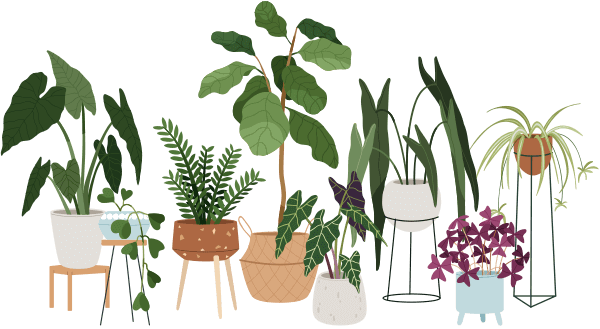Getting into the world of houseplants is rewarding—but sometimes, things don’t go quite as planned. If you’ve ever found yourself anxiously poking at soil, wondering why your plant seems sad, you’re not alone. Many new plant parents run into trouble by being too generous with water. It happens! Learning to spot the signs of over watering plants early can make all the difference in saving your leafy friends and building your confidence as a plant caregiver.
Let’s walk through what overwatering really looks like, how to fix it, and how to keep those green beauties thriving in your apartment sanctuary.
What Are the Earliest Signs of Over Watering Plants?
One of the biggest myths in plant care is that wilting always means a plant needs more water. Believe it or not, droopy leaves can actually be a sign of too much water! If you’re worried, start by looking for these common signs of over watering plants:
- Yellowing leaves (especially the lower ones)
This often means roots are staying too wet and getting stressed.
- Wilting despite moist soil
Plants can droop when they’re waterlogged just as much as when they’re parched.
- Soft, mushy stems or leaves
Soggy tissue is a clear indicator that the plant is getting more water than it can handle.
- A musty smell coming from the soil
This is often caused by roots starting to rot, which happens in persistently wet pots.
- Edema (small blisters or bumps on leaves)
Some plants push extra water out through their leaves, leaving behind little blisters.
If you notice one or more of these, pause before you reach for the watering can!
How Can You Tell If the Soil Is Too Wet?
Checking the soil is key when you’re worried about signs of over watering plants. Soil that stays wet for days or feels soggy below the surface isn’t drying out enough for roots to breathe.
Quick Ways to Assess Your Soil:
1. Finger test: Stick your finger about an inch deep. If it feels wet or muddy, wait before watering.
2. Lift the pot: If it feels much heavier than when dry, there’s plenty of water inside.
3. Look for fungus or gnats: Tiny flying bugs and fuzzy white stuff on soil are extra warnings.
Give your plant’s roots a chance to dry out a little before their next drink.
Can Over Watering Really Hurt My Indoor Plants?
Absolutely! Roots need both water and air to stay healthy. When you water too often, roots can’t get enough oxygen. They may start rotting—and root rot is one of the main dangers from ignoring the signs of over watering plants.
Common misconception:
Many people think watering a little every day is best. Actually, most plants prefer a cycle of thorough watering followed by several days of drying out.
How Can You Avoid Over Watering in an Apartment?
Caring for plants in an apartment means working with limited light and space. Over watering is a common issue, but you can keep it in check with a few simple habits:
- Choose pots with drainage holes.
- Let the top inch of soil dry out before watering again.
- Move plants closer to windows for better drying.
- Use a watering schedule reminder, but adapt based on the season (less in winter).
- When in doubt, it’s better to water a tad less than too much!
Summary: Trust the Signs of Over Watering Plants
Every plant tells a story through its leaves and soil. If you recognize the signs of over watering plants, you can quickly make small changes to set things right. Don’t worry—every plant parent makes mistakes. The key is to stay curious and patient. With a little practice and observation, you’ll have a happier, healthier indoor jungle in no time!


